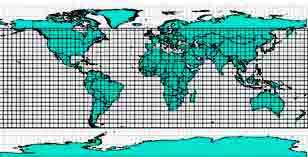 Space Shuttle Endeavour lifted off on February 11. One of its missions is an ambitious mapping of the earth. Approximately 80 percent of the Earth will be mapped, an area that covers 95 percent of the Earth’s population.
Space Shuttle Endeavour lifted off on February 11. One of its missions is an ambitious mapping of the earth. Approximately 80 percent of the Earth will be mapped, an area that covers 95 percent of the Earth’s population.
Currently only 60-70 percent of the world’s topography is mapped and much of that at a low 90-meter resolution. The project is called the Shuttle Radar Topography Mission (SRTM), an international project spearheaded by the National Imagery and Mapping Agency and NASA, with the participation of the German Aerospace Center DLR and the Italian Space Agency (ASI).
The end result will be the most complete three-dimensional, high-resolution map of the earth’s surface ever constructed. Information about topography will be collected during the shuttle’s flight using radar interferometry. The first images are available for viewing on SRTM’s website. The SRTM will produce 30-meter resolution topography, three times the resolution for commonly available data found outside the United States. This means that objects as small as 30 meters across and 10 meters high will be viewable through SRTM radar data.
Data Collection
The data collection area covered by the shuttle, between 60° north latitude and 56° south latitude, is shown below.
Radar interferometry is known as an active imaging technique because unlike traditional optical remote sensing techniques such as aerial photography and imaging spectroscopy where the sensor passively records the reflectance characteristics of the terrain below, radar emits a signal and records the return characteristics of that signal. Traditional methods of generating topographic maps utilized photographs acquired from high-altitude aircraft and satellites. These optical systems cannot penetrate the cloud cover that blankets nearly 40 percent of the Earth’s surface. As a result, some tropical regions where the cloud cover is virtually continuous have precluded detailing topographic mapping.
A main antenna aboard the shuttle will beam radar waves to Earth and two additional antennae will then collect the reflected waves bounced back from the Earth. The result is two radar images taken at slightly different locations. Comparing the difference in reflected signals allows for the creation of accurate maps of surface elevation. In addition, the terrain characteristics measured by radar can be used to show the location of prominent landforms, soil types, vegetation and water bodies. An additional benefit of radar, not available from aerial photography, is that the technique works in cloud cover. Radar can be utilized night and day to image the landscape below.
The collection of data during a single mission will provide topographical data generated under identical conditions and resolution, as well as similar biases. Currently, the worldwide collection of topographical data consists of an ad hoc patchwork of different resolution data collected without a consistent methodology. The best available global topographical data is currently the 1-kilometer resolution USGS GTOPO30 data set.
Who will benefit?
The benefits of worldwide high-resolution mapping are numerous. With the proliferation of GIS and remote sensing into so many areas, the topographical data will be of use to military, firefighters, geologists, recreationists and city planners to name a few. Researchers will be able to use this data to study flooding, erosion, landslide hazards, and other topographically determined phenomena.
The highest priority of the incoming data will be for military uses while civilian applicants will for the most part be restricted to utilizing 90 meter resolution data for areas outside of the United States. The data’s military applications include mission planning and rehearsal, modeling, and simulation. Data from SRTM will allow for more realistic flight simulators for military aircraft. Another such military application is navigation data for cruise missiles. A satellite can map “denied areas” in sensitive areas like Iraq and North Korea, generating maps for terrain-following cruise missiles. The data will also help in battlefield management and logistics planning.
The Defense Mapping Agency (DMA), plans to use the radar data to fulfill a joint defense requirement for a digital global terrain elevation map with data points spaced approximately every 100 feet (30 meters). The DMA currently holds a digital terrain map over 65 percent of the Earth’s land mass with data points every 330 feet (100 meters). Completion of this data set has been hampered by a lack of cloud-free photos over major portions of the world.
In addition, scientists and researchers will be able to apply for portions of the data to aid in their research. Potential applications of the data range from planetary geophysics to modeling hydrologic drainage systems.
Commercially, the data will useful for phone companies to determine the best locations for establishing cellular towers. The creation of more accurate topographical maps will be of use for backpackers.
The data will also help in politically charged situations. Political applications include accurate maps of territories in disputed regions for use during peace negotiations, like the Dayton accords which helped define borders for the former Yugoslavian republics.
As the data is analyzed and made available on a case-by-case data as projected in 1-2 years, further applications will become evident.
Source : GISlounge.com

0 comments:
Post a Comment